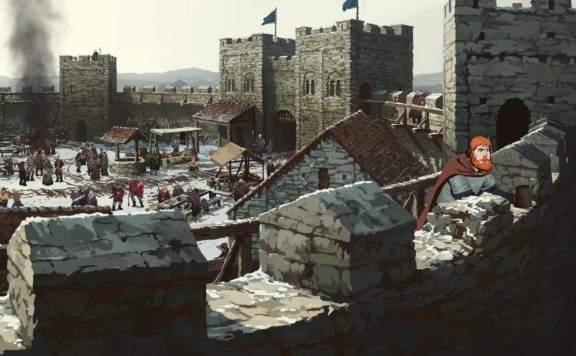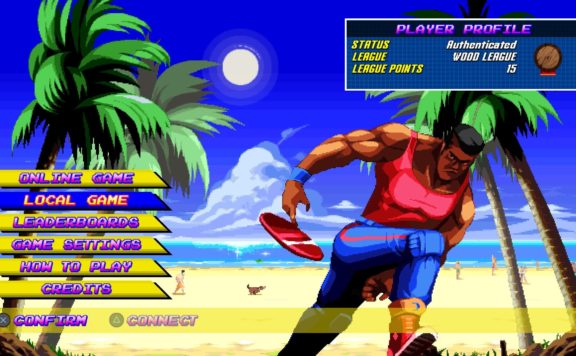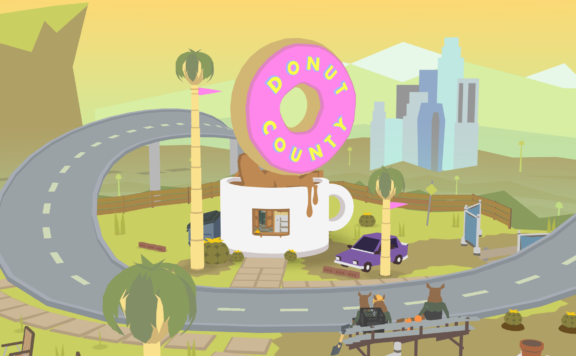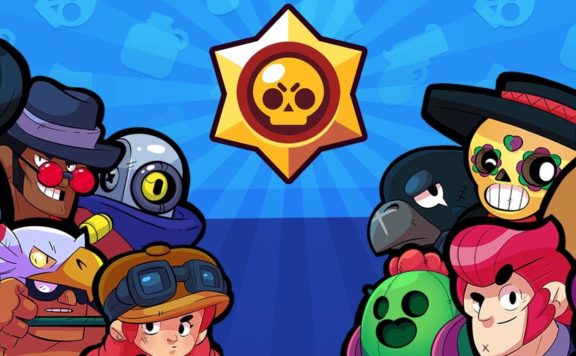If a non-gamer asked you to define what an action RPG was, would you be up to the task? What core features would you include in your description? I am sure we would all agree that it has to have real-time combat. I suspect you would also say it involves some sort of character progression, usually starting as a novice of whatever combat profession you belong to and evolving into a superhuman badass of destruction. Typically this progression is two-fold – part one is to gain character experience and skills, slowly but surely getting a little stronger or gaining a new spell that deals just a little more damage than the last. At the same time, you start a collection of equipment, slowly but surely trading in one weapon or piece of armor for the next, ever improving your ability to cause damage or withstand the attacks of your foes.
Unwhale Studio just released their ARPG Enoch – Underground, and to some, it may not live up to the description above. To many, it won’t have the flashy, over the top combat that titles like Diablo 3 or Path Of Exile portray. To others, there may not be enough character development. Before passing judgment, let’s break Enoch – Underground down into its components, and instead of worrying about whether it fits into our preconceived definition of ARPG, let’s focus on whether Unwhale Studio has created a game that is fun to play. This is our Enoch – Underground review.
Story
The story of Enoch – Underground is pretty familiar: Two thousand years ago, the great city of Enoch was destroyed by an ancient god. Since the cataclysm, you have been in a deep slumber. Now, after spending two millennia asleep, you have awoken to find yourself in the catacombs below the destroyed city. Unsure who you are, you set out to find answers. As you progress through the levels of the catacombs and into the city above, you will learn the story of what happened after the destruction of the great city of Enoch.
 Level Design And Visuals
Level Design And Visuals
First and foremost, I must note that the game is fairly short. There are only a few levels to explore, but each level is pretty decent in size. The time spent on each level is artificially extended by the lack of save points. Upon death, you retain your current inventory, but you will have to restart the current level from the beginning. All mobs respawn along with any breakables and potions, but any previously looted chest will be empty on subsequent trips through the level.
The levels are well constructed and visually appealing. The environments are very detailed and there are plenty of objects filling the space. The underground areas are very dark and gritty and, along with the ambient sound and music score, recreate the images I drew in my mind while reading fantasy novels in my youth. One thing I found to be spot on is the lighting. In many games, the hallways and rooms are brightly lit as though torchlight shines as bright as the sun. In Enoch, torchlight “feels” right, and sets an eerie tone as you move away from a light source into the shadowy spaces.
The decor also adds to the tension as you traverse the halls and rooms. There is plenty of rubble and debris strewn about, and you will also come across hastily abandoned campsites. Makeshift barriers are abundant and spark your imagination as to what happened to those who came before you. The time you spend above ground gets the same treatment and, although brighter, still has that same haunting feeling that terrible things happened here in the past.
For those who take the time to thoroughly search the levels, there are a few rewards to be garnered. There are hidden rooms containing chests that can be accessed by breaking down walls. For those brave enough to attempt them, some levels also have a series of traps to traverse to reach chests with high-quality loot. And don’t forget to locate the shopkeeper on each level that is willing to take your hard-earned gold in exchange for goods to help you on your journey.

Unfortunately, the one thing that stands out like a sore thumb is the water effects. There is no such thing as still water, with every body of water having constant ripples. Waterfalls are just atrocious with horrible sheets of water textures falling from above and giving off as much spray as Niagra Falls. There were even a couple places where a pile of stones would have an invisible water source splashing across it. The animation was done so poorly I had to stop and stare at it for a few seconds just to figure out what it was supposed to be. With the obvious passion and care put into creating the rest of the visuals, it is really confusing why the water is done so poorly.
Combat
The combat is much slower than the usual offering in an ARPG. You won’t be spamming fireballs or making any wild whirlwind melee attacks. Instead, you have but a few weapons to choose from, each with its own style of attack. Each weapon type, whether it be a dagger, sword, ax, or a blunt type weapon, will have a weak and strong attack tied to the left and right mouse buttons respectively. Each weapon can be used alone or with a shield, with the shield changing the attack style and affording greater blocking ability. Regardless of your weapon of choice, you also have the ability to make a diving roll to evade an attack or close the gap with a target.
Understand one thing – combat is brutal. Just because the weapon choice is limited doesn’t mean combat is simple. In fact, the exact opposite is true. Each weapon type has properties similar to its real-life equivalent. Daggers will have you making quick thrusts, while a saber will have the expected slashing attacks. Weak attacks made in succession, when timed correctly, can be chained together in a powerful assault that will quickly dispatch an enemy. Strong attacks, on the other hand, will be able to take down an enemy with just one or two hits, but doing so can put you out of position if you miss your mark or are fighting multiple enemies at once. For example, the strong attack of the gladius is a jumping lunge that requires a decent amount of space to pull off, and when you land it takes time to regain your balance and ready for the next attack, leaving you open to a counter-attack at both the beginning and end of your maneuver.

For creatures such as spiders or mindless zombies, your enemy will blindly advance towards you and attack when in range. The strategy is fairly straightforward here – keep your distance and strike when you have enough stamina. Things get interesting when fighting bandits though. These intelligent adversaries will be equipped with the same weapons and attacks available to you, so identifying what weapon they have is paramount to your success in battle. Positioning and timing become extremely important, and making an unwise attack will end with your corpse lying lifeless on the floor. Combat becomes a game of cat and mouse similar to an Errol Flynn fight scene, with each party circling the other looking for an opportune moment to strike.
All of this made combat very frustrating at first, and I found myself dying over and over in Demon Souls fashion. As I became more intimate with the characteristics of each weapon, one on one combat became much easier, and fighting multiple foes at once didn’t mean certain death. Being aware of what attack patterns the enemies would take was the first step to success. Knowing from what distance to begin my attack, how much stamina it would use, and even favoring the left or right side of an enemy, helped me anticipate where I would end up in relation to my target, allowing me to disengage from my foe unharmed, ready to plan my next assault.
Character Progression
Another departure from typical ARPGs is the minimal amount of character progression. You don’t gain experience from fighting foes, so your character doesn’t level up or gain any powers as you progress through the game. In fact, the only progression you will have is in finding better quality gear from the chests scattered through the levels, and even that is limited.
Your character is able to equip one weapon along with a shield in your off hand if you so choose. Missing are two-handed weapons, and dual wielding isn’t allowed either. As stated above, weapon choice determines your two attacks, but little else. You will find shields of different sizes, with each larger size increasing the amount of damage mitigation. As for weapons, each type has a common, rare, and epic version. The top tier weapons have a ‘weapon skill’ attached to them, which is basically a temporary elemental damage boost (flaming, shock, etc.) with limited charges.
 Armor is even more limited. Your character can equip just one piece of armor. You heard right, no boots, gloves, helmets, belts, capes, or special underwear. The tooltips suggest that armor type effects mobility, but I was not able to discern a difference in movement when wearing different armor types. Armor does affect your health pool; better armor will give a substantial boot to your hit points.
Armor is even more limited. Your character can equip just one piece of armor. You heard right, no boots, gloves, helmets, belts, capes, or special underwear. The tooltips suggest that armor type effects mobility, but I was not able to discern a difference in movement when wearing different armor types. Armor does affect your health pool; better armor will give a substantial boot to your hit points.
Beyond armor and weapons, your last equip slot is an accessory. Throughout the entire game, I only found two different accessory items, a Health Restoration ring with 4 charges and a Slow Time trinket that created a bubble around your character that allegedly slowed any enemies within the bubble, though it didn’t seem to work as intended. You also have 5 potion slots that can be filled with either small or large health potions. Lastly, 5 additional inventory slots are available to hold spare equipment, but switching items can only be done outside of combat.
Final Thoughts
Enoch – Underground is not an AAA title. As an indie developer, Unwhale Studio had to make a lot of compromises when compared to the big guns of the ARPG arena. For beginners, the game is not very long. For the $10 price of admission (10% off on Steam at the time of this review), you are going to get at most 10 hours of gameplay. There are only a handful of creatures that you will encounter – spiders, zombies, and humans, along with bosses to defeat at the end of each level. While each type of creature has a couple of variants, the true variety is found in the humans wielding different weapon types and the resulting tactics they use.
This brings me to my biggest observation about Enoch – Underground: Indie developers have to choose between quality and quantity, and limited resources means making compromises. The guys at Unwhale Studio chose to make a quality visual and aural experience that takes 8-10 hours to complete. They could have gone with 8-bit graphics and thrown together a bunch of levels to make the game two or three times longer, but they didn’t. Instead of making an intricate combat system that focuses on tactics and weapon styles, they could have thrown in a ton of different weapons and skills and taken the status quo approach of making super-powerful characters that lay waste to wave after wave of mobs, but they didn’t. The story of Enoch is fed to the player through notes left behind by long-deceased inhabitants of the city. They could have wasted time and money telling the same story through cutscene after cutscene that most people would just skip past, but they didn’t.
Unwhale Studio could have made a cookie cutter ARPG. But they didn’t. And I am ok with that.
Note: Our copy was reviewed on PC with a code provided by PR.
FINAL ENOCH REVIEW SCORE: 7.5/10
PROS:
- Engaging combat system
- Well constructed levels
CONS:
- Short play time with limited replayability
- Minimal character progression
- Terrible water effects







